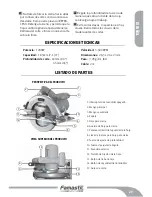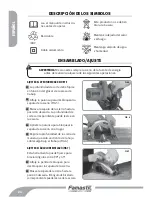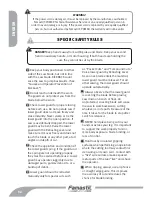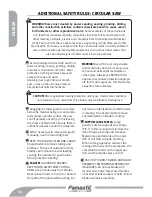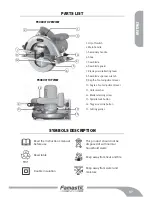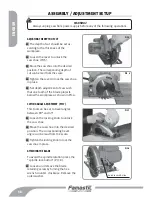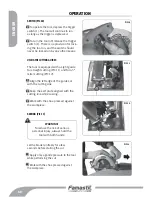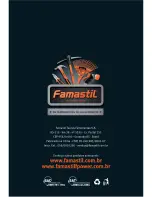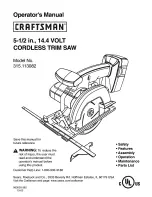
36
ENGL
IS
H
Keep a firm grip on saw with both
hands at all times.
Stay alert – exercise control.
Support long overhanging materials.
As the material is cut and weakens, it
will sag, causing a pinched blade.
Support large panels. Material sup-
ported only at the ends will lead to
blade pinching.
Avoid sawing overhead. Material can
sag and will pinch blade.
Keep blades sharp and clean.
Use fence or straight edge guide when
ripping. Be careful as the cut off strip
can sag or twist, closing the cut and
pinching the blade, leading to KICK-
BACK.
Don’t force tool. Wood variables such
as knots, hardness, toughness, wet-
ness, pressure treated and freshly cut
green lumber can heavily load the saw
which can lead to stalling. Push the saw
slower when this occurs.
Don’t remove saw from work during a
cut while the blade is moving.
TO REDUCE THE RISK OF KICKBACK
Allow saw to reach full speed before
blade contacts material to be cut.
Starting the saw with the blade against
the work or pushed forward into cut can
lead to stalling or sudden backward
movement of saw.
Never attempt to lift saw when making
a bevel cut. This leads to blade binding
and stalling.
Always secure work to prevent work-
piece movement during cut.
Do not try to force saw back on line if
your cut begins to go off line. This can
cause KICKBACK. Stop saw and allow
blade to coast down to a stop. Withdraw
from cut and start a new cut on the line.
Set depth adjustment of saw such
that one tooth of the blade projects
below the workpiece.
Do not back up a rotating blade in the
cut. Twisting the saw can cause the
back edge of the blade to dig into the
material, climb out of the work and run
back toward the operator.
Avoid cutting nails. Inspect for and
remove all nails from lumber before
cutting.
TECHNICAL SPECIFICATIONS
Power:
1200W
Capacity:
185mm (7.1/4”)
Cutting capacity:
63mm (90
º
)
45mm
(45
º
)
Speed:
5.500RPM
Measures:
26,5 x 24 x 23cm
Weight:
3,7Kg (8,1 lbs)
Cord:
2m
10
01
02
03
04
05
06
07
08
09
11
12
13
14
15
16


